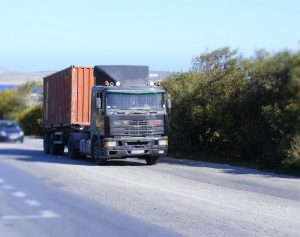A slow moving vehicle is a vehicle that is being operated on the highway and that is moving slower than the flow of other traffic.
As a learner driver, you may find yourself in a queue of traffic behind a slow moving vehicle and if not as a learner, you’ll certainly find yourself in that situation sometime soon.
You’ll often find that drivers behind the slow moving vehicle are desperate and impatient to overtake it, even if they are not short on time or have anywhere of particular importance to be.
As the population increases, so does the amount of vehicles on our roads. This inevitably increases traffic congestion which can affect the temperament of drivers, resulting in stress.
Overtaking any vehicle comes with risks, so before doing so, think, do I really need to overtake? If you’re not in any particular rush, just stay behind. After all, you’ll be saving a little on fuel by driving slower. If you really do need to overtake, ensure it is necessary, that it’s safe and that’s it’s legal to perform the manoeuvre. Always check your mirrors and signal your intention to overtake. For further information on the overtaking procedure, see:
Types of Slow Moving Vehicles
The types of frequently seen slow moving vehicles you’re likely to encounter include:
- Tractors – associated as being slow-moving, modern tractors are capable of reaching reasonable speeds of up to 45 mph. However, on public roads a tractor driver must not legally exceed 25 mph. Tractors and other farm machinery can often be found in operation around country roads. Country roads are the most hazardous types of roads due to blind corners and hairpin bends. Be cautious of farm machinery pulling out of fields and moving slowly around bends. Tractors although slow, are often on public roads for a short time only as they move from one field to another, so it’s often worth just staying behind and waiting.
- Large Vehicles – Heavy Goods Vehicles (HGV’s) due to their sheer size are often slow around towns and will often need extra room when turning. Always give HGV’s, large vehicles and buses extra room at junctions and roundabouts to allow them enough space to manoeuvre. Many large vehicles, including vehicles towing caravans are also legally restricted to 50 mph on national speed limit single lane carriageways, though for car drivers the legal limit 60 mph. If you intend on overtaking, do not tailgate and stay well back as this provides the best view of the road ahead. Remember it takes far more time to overtake a long vehicle. Only overtake if you can clearly see well ahead on a long straight road and that oncoming vehicles are not obscured by dips in the road. See driving near large vehicles for further advice.

- Low Powered Motorcycles and Mopeds – on single lane national speed limit roads (60 mph) certain small engine motorcycles and mopeds are unlikely to be powerful enough to reach 60 mph. It’s unlikely they’re driving this slow intentionally, just that their vehicle cannot go any faster. Motorcycle and moped riders may appear to be inconsiderate by taking up the entire lane, though in reality they will often ride away from the road gutter where lose debris and potholes present a danger. Always provide them with as much room as you would a car when overtaking as riders will often need to change course quickly due to hazards such as potholes and drain covers in the road.
- Slow Car Drivers – Car drivers may be driving slowly for numerous reasons. The driver may be elderly, a nervous driver, a new driver or simply a little lost. Many road users are very quick to become impatient and angry with slow car drivers, often with little reason and no understanding of why they’re driving at that speed. In reality, a slow car driver isn’t likely to impact your journey in terms of time to any great extent. Always allow plenty of time for journeys to compensate for unforeseen situations.
Related Information
Other slow moving road users include cyclists. Often in battle between vehicles, cyclists represent vulnerable road users. For a tutorial on how to correctly deal with cyclists, see:

What about drivers who doggedly sit right behind slow moving vehicles but make no attempt to overtake. They clog up the roads.
Some drivers simply don’t have the confidence to overtake, or they might be driving a small engine vehicle that requires more time to overtake so they need to wait.